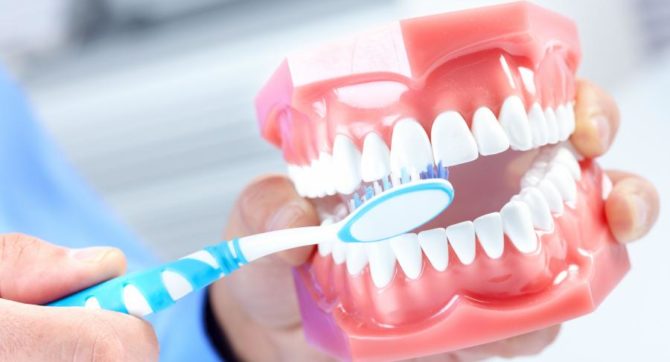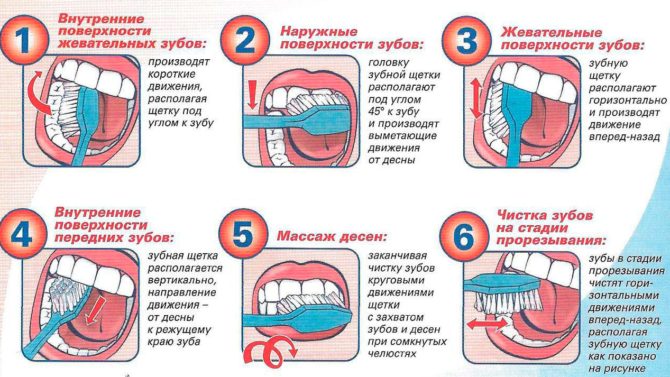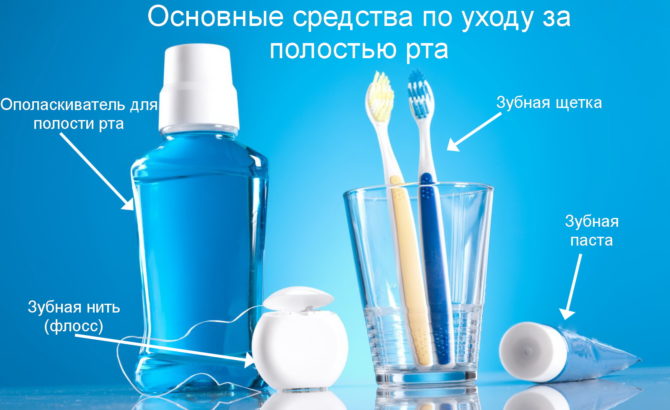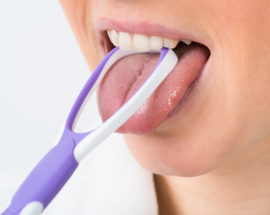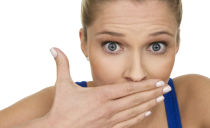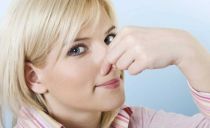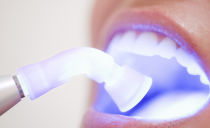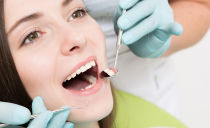Rules for maintaining oral hygiene
The contingent of dental clinics mainly consists of people who are poorly educated in oral hygiene. As numerous studies show, the majority of dental patients do not have a complete idea of the importance of oral hygiene, the principles of daily dental care, the rules for choosing hygiene products and other components of a preventive dental culture. The consequence of low awareness of oral hygiene is the development of numerous dental diseases.
Content
The consequences of improper dental care
Microorganisms reproduce under conditions with favorable temperature conditions and in the presence of carbohydrates, therefore the mouth is the site of the accumulation of the largest number of bacteria. Their constant effect on tooth enamel can destroy the tooth and cause diseases such as:
- Caries and pulpitis. Symptoms of such pathologies are expressed in painful sensations in the area of teeth and gums. With caries, pain occurs as a reaction to external stimuli, with pulpitis - spontaneously.
- Periodontitis and gingivitis. The etiology of such diseases is most often explained by advanced caries or pulpitis. Symptomatic pathologies are manifested by bleeding and inflammation of the gums, loosening of the teeth and their partial edentulism (loss).
- Stomatitis is an inflammation of the mucous membranes of the mouth, in which ulcers with pus, spots or extensive foci of redness form on the gums, cheeks, palate, or tongue. The mucous membranes of the tongue and cheeks are covered with a characteristic plaque, the gums swell and bleed.
- Glossitis is an inflammation of the tongue that occurs as a result of stomatitis. It is manifested by burning, coloring and pigmentation, hypersalivation, uncharacteristic for the tongue.
- Halitosis, which is explained by the pathological growth of anaerobic bacteria. Pathology is expressed by bad breath.
An indifferent attitude to the state of the oral cavity is fraught with the development of diseases of the stomach, heart, endocrine, nervous system and other complications. For the treatment of dental and general diseases that have arisen, you will have to undergo a complex and expensive therapeutic course, which can be avoided by following the simplest basic rules of oral hygiene.
Principles of oral hygiene and dental care
The concept of hygiene is laid from early childhood on the example of parental sanitary behavior. And hygiene habits are formed in accordance with the knowledge of the daily regimen, diet, and the technique of therapeutic and preventive measures. Therefore, it is necessary to teach the child the basic rules of hygiene from infancy.
Most patients with dental pathologies believe that twice daily cleaning of the surface of the teeth is a sufficient measure to prevent caries and other diseases. However, the daily procedure for cleaning enamel from food debris is one of the components of an extensive oral care system. In addition to her, it is necessary to carry out the following preventive measures:
- Rinse your mouth after eating to remove food debris.
- Use of auxiliary means: irrigator, tooth powder, floss, brush.
- Compliance with diet.Dentists advise to exclude from the diet sweet and sour foods, carbonated drinks.
- A systematic visit to the dentist. Starting from the age of one year, monitoring of the oral cavity should be carried out by a specialist at least once every six months.
- Professional toothbrushing.
The basis of proper oral hygiene is a competent approach to the selection of tools for dental care and compliance with the technique of cleaning the tooth surface.
Brushing technique
Carbohydrates in food particles that accumulate in the oral cavity after a meal provoke the growth of pathogenic bacteria and the development of caries, therefore, the removal of food debris is the most important aspect in the prevention of dental diseases. The effectiveness of preventive measures is affected not only by the regularity of hygiene procedures, but also by the quality of toothbrushing.
Enamel cleansing from plaque should be carried out twice a day and according to the requirements of oral hygiene and teeth:
- teeth should be brushed from both the external and internal sides; the procedure should be started from the upper molars;
- the toothbrush must be directed from the gingival margin to the top of the tooth;
- chewing teeth require cleaning with reciprocating movements;
- the tongue is properly cleaned from root to tip, cleaning the inner surface of the cheeks is carried out in a similar way;
- the removal of food deposits between the teeth is carried out by dental floss;
- To complete the procedure, rinse your mouth with a special tool - rinse aid.
The duration of brushing should be no more than 3-5 minutes - 10 seconds for each tooth. A longer procedure can provoke a thinning of the tooth enamel.
Criteria for selecting fixed oral care products
The leading hygiene products include toothbrushes, flosses, pastes and rinses. Their choice should be made taking into account the structure of the jaw, tooth sensitivity and other individual parameters.
The main criteria for the quality of toothbrushes are:
- The design and size of the head. For preschool children, toothbrushes with straight and equally sized tufts of bristles are selected, the number of tufts usually does not exceed 23. Toothbrushes for adolescents and adults consist of a larger number of tufts - from 30, their location and length can be different.
- Rigidity of the villi. Toothbrushes with soft bristles are preferable to use for children under 10 years of age and for people suffering from periodontal disease. The villi of a high degree of rigidity are intended for patients with established dental designs.
- Handle length. Preference should be given to brushes with comfortable and non-slip handles. Brushes with long handles are selected for the kids, as their parents will clean their teeth.
Electric toothbrushes are also on the hygiene market. Their advantage lies in the increased cleaning ability, which is achieved due to intensive automated movements of the brush head.
The use of an electric brush by young children is not recommended due to uncleaned cleaning skills.
Toothpastes are divided into hygienic and therapeutic. The former have a cleansing effect and refresh the breath. The purpose of the second - a directed fight against diseases of the oral cavity.
Conditioners are classified according to their purpose: refreshing breath, anti-inflammatory, reducing tooth sensitivity, prophylactic. In the absence of dental pathologies, it is recommended to use means that eliminate bad breath.
Additional hygiene products
The basic attributes for oral care reduce the likelihood of dental diseases, but ideally additional means should be used.Selection of auxiliary hygiene devices and means should be carried out in accordance with the direction of their action.
To improve the quality of daily hygiene procedures, the following products are produced:
- Tooth powders. They serve as an analogue of toothpastes, but they can not be used more than twice a week.
- Irrigators are devices whose main functions are cleaning of foodstuffs from hard-to-reach areas and hydromassage of gums.
- Toothbrushes. Used to remove plaque under orthopedic structures.
- Scrapers Designed to cleanse the tongue.
The hygienist conducts information on the advantages and disadvantages of a particular hygiene product, the correct methods and the regularity of its use.
Professional hygiene
The set of measures carried out by the dental hygienist during rehabilitation (preventive examination) is aimed at analyzing the condition of the teeth and gums, informing the patient about the rules and methods of hygiene procedures, preventing tartar and caries. Professional oral hygiene involves several stages:
- Inspection, during which the state of the oral cavity is assessed, a preventive treatment strategy is being developed.
- Removal of dental plaque. For this purpose, ultrasonic or laser devices are used that effectively remove plaque from teeth, interdental space, and gingival pockets.
- Polishing and grinding enamel. The procedure allows you to slow down the appearance of dental plaque.
- Remineralization is the saturation of dental tissues with minerals that help prevent tooth decay and restore tooth sensitivity.
- Implantation and whitening are considered as additional components of occupational hygiene, the need for which depends on the condition of the teeth.
It is recommended to resort to professional hygiene twice a year, however, some categories of people (smokers who abuse coffee) are recommended a more frequent visit to a specialist - once a quarter. Professional brushing is an expensive event (from 4 thousand rubles in Moscow), but an irregular visit to a specialist increases the risk of late detection of sluggish dental diseases, the treatment of which can be more expensive than professional hygiene of the teeth and oral cavity.

